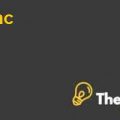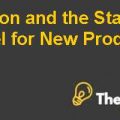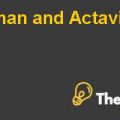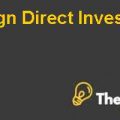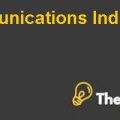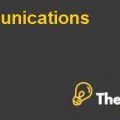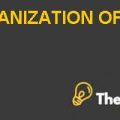Google Car Case Study Solution
Introduction
Google was established in 1997 by Larry Page and Sergey Brin in California. The company has been operating successfully worldwide. The company holds over 40 offices in 40 different countries. The services provided by Google include Google AdWords, Google Ad Sense, Google Search, Gmail, YouTube and many others. The company has faced great success in a very low time. Moreover, Google Company also owns an operating system which is Android and is the most used operating system in electronic devices. The company has also facilitated different companies with hardware such as Motorola.
The reason for company’s success is its operating tactics. These tactics define that user and its convenience is the most important,the need and requirement of information over weighs all boundaries, working fast is better than working slow, seriousness and efficiency is not represented by the dress and personality of a person, but rather than way of working and last, great is not good enough, it needs to be much better. These tactics help the company and its employees to work efficiently and facilitate its users with advanced facilities.
Google has now been planning to enter into automobile industry by innovating driver less cars. It has been identified that automobile industry is very competitive. Moreover, it also has been analyzed that Google has no experience of working in highly diversified and competitive industry along with the development of cars and other related items. However, previously, the company had made important acquisitions such as Waze, which instructs the cars. In addition, development of Android and its application in auto mobile could be performed by the company.
There are many benefits of investing in this technology. The basic benefit is that it would reduce the risks of car accidents and death threats of any person as the car will run through technology.In addition, it would create facilities for blind and disabled persons. Some of the limitations have also been described. These limitations include nature of baby boomers as they would not like to hand over their vehicle to any technology. Moreover, the devices needed to be installed in the cars are highly expensive, which would be reluctant to many price-conscious consumers. In addition, trusting technology is highly risky in human nature.
Despite of these risks and benefits, Google has used some testing strategies in order to determine the demand and consumer interests. It suggests that in Brazil, China and India, 95%, 86% and 70% of people have responded positively in order to trust the technology, respectively. On the other hand, the international survey shows that only 30%of respondents would be comfortable with the technology in autonomous cars. Moreover, only 20% of consumers were agreed to spend $3000 on this equipment.
Problem Statement
Google Company is financially and resourcefully rich in order to introduce this product. However, the company was facing few queries such as if the company was investing in a right place. Moreover, the company also wants to determine about which appropriate strategy would be used by the google that would decrease its threats and increase opportunities.
Google Car Harvard Case Solution & Analysis
Analysis
We evaluate the position of the company in relation to the industry using PESTEL model along with this, we also calculate some ratios to determine the financial position of the company.
Financial Analysis:
Financial analysis is the method which is used to determine the overall performance and position of the company. In this analysis, we conclude that either an entity is stable, profitable or hasagood liquidated position or not. In our analysis, we calculate operating margin, net margin and interest coverage to ascertain the liquidity and profitability position of the company.
| 2011 | 2012 | 2013 | |
| Operating margin | 30.98% | 25.43% | 23.34% |
| Net Margin | 25.69% | 21.40% | 21.60% |
| Interest Coverage | 20.11 | 20.38 | 26.35 |
Operating margin:
Operating margin measures the earning which will be left after paying the variable cost of the company. This margin reveals the effectiveness of the company that how well company manages its expenses. The ratio is resulted by dividing operating income by the total income. (Randall K. Filer, 2003)
The operating margin of the company is decreasing and with the passage of time it has become 23.34% from 30.98%. The decrease indicates that the company has lost its control over the expenses and hence it may face problems in long-term.
Net Profit margin:
Net profit margin measures the earning which will be left after incurring all of the expenses of the company. This margin reveals the effectiveness of the company that how well company manages its expenses. The ratio is resulted by dividing net income by the total income. (Patricia M. Fairfield, 2001)
The net income margin of the company is decreasing with the passage of time it has become 21.60% from 25.69%. The decrease indicates that the company has lost its control over the expenses and hence it may face problems in long-term.
Interest Coverage:
Interest coverage ratio determines the ability of the company to meet its interest expense obligation, this ratio also reveals the liquidity position of the company. The ratio is resulted through dividing earnings before interest and tax by the interest expense. (Dothan, 2006).................
This is just a sample partial work. Please place the order on the website to get your own originally done case solution.

